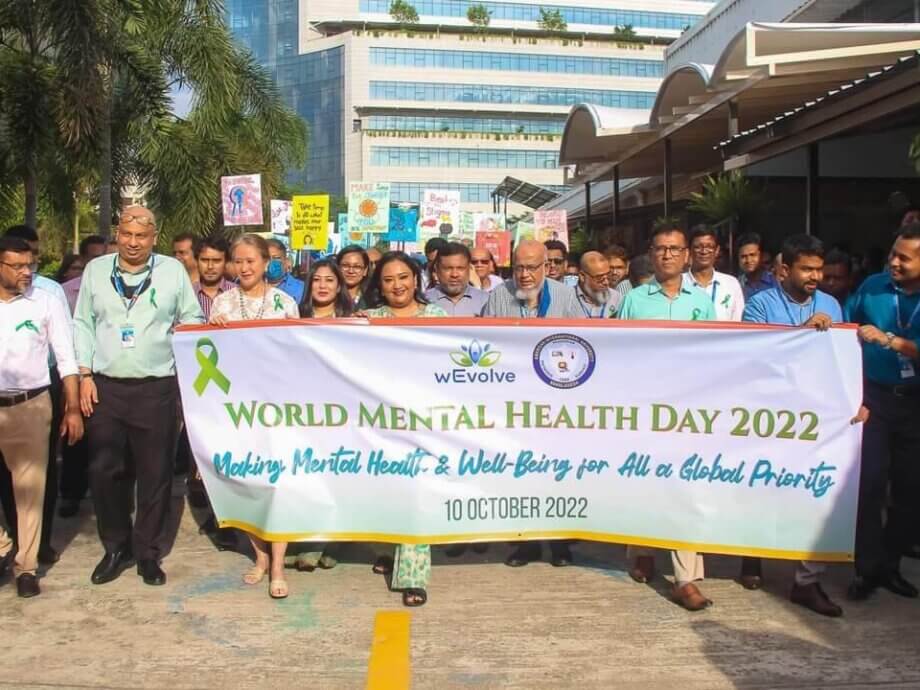Why Mental Health Education Matters in Bangladeshi Schools
Mental health has become an increasingly important topic in Bangladesh, especially in the context of schools where children and adolescents spend a significant portion of their formative years. Despite growing awareness, the implementation of mental health support and education in Bangladeshi schools remains limited. The COVID-19 pandemic, which led to prolonged school closures and widespread disruption, has further highlighted the urgent need for comprehensive mental health strategies within educational institutions.
- Why Mental Health Education Matters in Bangladeshi Schools
- The Current State of Mental Health in Bangladeshi Schools
- Barriers to Mental Health Support in Schools
- The Impact of School Environment on Child Psychology
- Recent Initiatives and Policy Developments
- What Does Effective Mental Health Education Look Like?
- The Role of Teachers and School Leadership
- Challenges and the Way Forward
- Broader Implications: Mental Health, Education, and National Development
- In Summary
In Bangladesh, mental health is often stigmatized, and discussions around it are rare, particularly in school settings. Yet, mental health is as vital as physical health, profoundly impacting students’ well-being, academic performance, and future prospects. As the country seeks to modernize its education system and support its youth, integrating mental health education and support into schools is both a challenge and a necessity.
The Current State of Mental Health in Bangladeshi Schools
Bangladesh is home to over 24 million school-aged children, with a significant proportion facing mental health challenges. Studies estimate that 13.4% to 22.9% of children and adolescents in the country experience some form of mental disorder. The prevalence of depression and anxiety is particularly high among students preparing for university entrance exams, with recent research showing rates of 53.8% and 33.2% respectively among this group.
Despite these alarming statistics, mental health education is largely absent from the national curriculum. An evaluation of primary and secondary science textbooks found that most contained no information about mental health, focusing instead on physical diseases and their prevention. Only one senior-level textbook briefly mentioned adolescent mental health promotion. This gap in the curriculum means that most students receive little to no formal education about mental health, its importance, or how to seek help.
Teachers, who are often the first line of support for students, also face significant mental health challenges. During the COVID-19 pandemic, rates of depression, anxiety, and stress among teachers rose sharply, with schoolteachers particularly affected. The lack of training and resources to address students’ psychological needs further compounds the problem.
Barriers to Mental Health Support in Schools
Several factors contribute to the lack of mental health support in Bangladeshi schools:
- Stigma and Cultural Taboos: Mental health remains a taboo subject in many communities. Students and families often fear judgment or discrimination, leading to reluctance in seeking help.
- Disciplinary Focus: Traditional school practices prioritize discipline and academic achievement over understanding students’ emotional needs. Behavioral issues are often addressed with punishment rather than support.
- Resource Constraints: Public schools, especially in rural areas, often lack the resources to provide counseling or mental health services. Even private schools, despite having more means, may not prioritize mental health due to lack of awareness or willingness.
- Overcrowded and Poorly Maintained Facilities: Many schools suffer from overcrowded classrooms, inadequate lighting and ventilation, and insufficient playgrounds. These environmental factors can negatively impact students’ psychological well-being.
These barriers create an environment where students’ mental health needs are overlooked, and those struggling with emotional or psychological issues may go unnoticed or unsupported.
The Impact of School Environment on Child Psychology
The physical and social environment of schools plays a crucial role in shaping students’ mental health. Research shows that overcrowded classrooms, poor lighting, inadequate ventilation, and lack of playgrounds contribute to increased stress, anxiety, and behavioral issues among students. In urban areas, where space is limited, many schools lack adequate facilities for physical activity, further exacerbating mental health challenges.
Moreover, the quality of relationships within the school—between students, teachers, and peers—significantly affects psychological well-being. Authoritarian teaching styles, excessive academic pressure, and bullying (including verbal, physical, social, and cyberbullying) are common sources of distress. Family expectations and societal pressures also weigh heavily on students, sometimes leading to feelings of inadequacy, isolation, or even suicidal thoughts.
Recent Initiatives and Policy Developments
Recognizing the growing mental health crisis among students, the Government of Bangladesh has taken some steps to address the issue. In 2018, a Mental Health Act was approved, and a national mental health policy was developed, prioritizing community-based services. The urgency of the situation became even more apparent during the COVID-19 pandemic, which saw a sharp rise in mental health problems among children and adolescents due to prolonged school closures and social isolation.
In response, UNICEF collaborated with the Ministry of Education to introduce school-based Mental Health and Psychosocial Support (MHPSS) programs. These initiatives aim to integrate mental health and psychosocial well-being into the national curriculum and provide support services within schools. The COVID-19 School Sector Response (CSSR) Project, supported by the World Bank and other partners, trained nearly 950 teachers in mental health and stress management, developed digital learning content, and improved hygiene facilities in thousands of schools to support safe reopenings and reduce dropout rates.
Despite these efforts, the integration of mental health education into the core curriculum remains limited. Most awareness-building programs are discrete and not systematically embedded in everyday teaching and learning.
What Does Effective Mental Health Education Look Like?
Experts and educators agree that a holistic approach is needed to address mental health in schools. This means moving beyond rote learning and discipline to foster environments where students can develop emotional intelligence, resilience, and healthy coping skills. Key components of effective mental health education include:
- Social and Emotional Learning (SEL): Teaching students to regulate emotions, set goals, build relationships, and make responsible decisions.
- Open Discussions: Creating safe spaces for students to talk about their feelings, experiences, and challenges without fear of judgment.
- Professional Counseling Services: Employing trained mental health professionals in schools to provide support and guidance.
- Teacher Training: Equipping teachers with the skills to recognize signs of distress, provide initial support, and refer students to appropriate services.
- Parental and Community Involvement: Engaging families and communities in promoting mental health awareness and reducing stigma.
- Inclusive and Supportive Environments: Ensuring that school facilities and policies support the psychological well-being of all students, including those with special needs.
Integrating mental health topics into science and language classes, organizing workshops and seminars, and encouraging creative expression through writing, art, and drama are practical ways to promote mental health literacy among students.
The Role of Teachers and School Leadership
Teachers are central to the success of mental health initiatives in schools. However, many teachers in Bangladesh feel ill-equipped to address students’ psychological needs, especially in times of crisis. Regular training and support for teachers are essential, not only to help them support students but also to safeguard their own mental health. Studies have shown that teachers’ well-being directly influences the classroom environment and students’ outcomes.
School leadership must prioritize mental health by allocating resources, establishing counseling departments, and fostering a culture of empathy and openness. This includes recognizing the unique needs of each student and moving away from one-size-fits-all approaches to discipline and academic achievement.
Challenges and the Way Forward
While progress has been made, significant challenges remain in making mental health education a reality in all Bangladeshi schools. These include:
- Limited Funding: Many schools, especially in the public sector, lack the financial resources to hire counselors or implement comprehensive mental health programs.
- Curriculum Gaps: The absence of mental health topics in textbooks and teaching materials means that most students do not receive formal education on the subject.
- Stigma and Awareness: Deep-seated cultural attitudes continue to hinder open discussions about mental health.
- Teacher Preparedness: Short-term training is insufficient; ongoing professional development is needed to build teachers’ confidence and competence in supporting students’ mental health.
To overcome these barriers, experts recommend a multi-pronged approach:
- Integrate mental health education into the national curriculum at all levels.
- Provide regular, in-depth training for teachers and school staff.
- Establish dedicated counseling services in schools, with professional mental health practitioners.
- Engage parents and communities in awareness campaigns to reduce stigma.
- Improve school environments, including classroom conditions and recreational facilities, to support overall well-being.
Broader Implications: Mental Health, Education, and National Development
Mental health is not only a personal or educational issue but also a matter of national development. The World Economic Forum describes “mental capital” as the cognitive and emotional resources that enable individuals to learn, adapt, and contribute to society. Low mental capital can reduce productivity, increase economic costs, and limit future opportunities for individuals and the nation as a whole.
Bangladesh’s commitment to the Sustainable Development Goals (SDGs), particularly Goal 3 on health and well-being, underscores the importance of addressing mental health. Target 3.4 specifically calls for reducing the suicide mortality rate by one-third by 2030, highlighting the need for urgent action in schools and communities.
By investing in mental health education, Bangladesh can equip its youth with the skills to manage stress, communicate effectively, and build resilience—qualities that are essential for personal success and national progress.
In Summary
- Mental health challenges are widespread among Bangladeshi students, with high rates of depression and anxiety, especially post-pandemic.
- Stigma, lack of resources, and curriculum gaps hinder the implementation of mental health education in schools.
- Recent initiatives by the government and international partners have begun to address these issues, but integration into the core curriculum remains limited.
- A holistic approach—including social and emotional learning, professional counseling, teacher training, and supportive environments—is essential for effective mental health education.
- Teachers’ well-being is crucial, as it directly affects students and the overall school climate.
- Improving mental health education in schools is vital for individual well-being, academic success, and national development.
- Ongoing collaboration among government, educators, parents, and communities is needed to create a supportive and stigma-free environment for all students.












